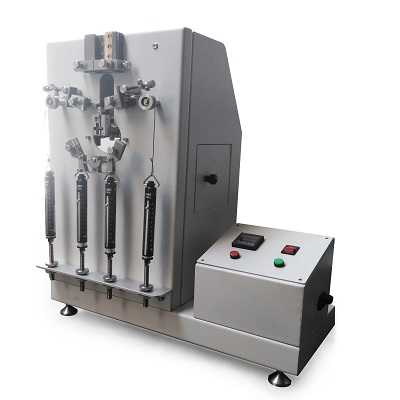
NewsInformation Center
Analysis of experimental operation steps of zipper fatigue test
2023/09/08
Zipper fatigue testing machine is a testing equipment used to evaluate the durability and fatigue performance of zipper products during use cycles. It simulates the repetitive pulling action of a zipper in daily use and measures and records force and displacement data during each cycle.
The following is the basic working process of the zipper fatigue tester:
1. Sample installation: Correctly install the zipper product to be tested (such as zipper slider or zipper tab) onto the tester. Make sure the zipper is securely fastened so that the pull of the zipper does not shift or loosen during the test.
2. Set test parameters: Set parameters such as the number of test cycles, pulling speed and strength as needed. These parameters can be set according to test standards, product specifications or specific test requirements.
3. Start testing: Start the tester and it will automatically simulate the pulling action of the zipper product. Typically, a robotic arm or clamp is used in the test to simulate the movements of a human hand to repeatedly pull the zipper back and forth.
4. Force and Displacement Measurements: The tester measures the force applied to the zipper and the zipper's displacement during each cycle. This data can be obtained through sensors, pressure gauges or displacement gauges.
5. Data recording and analysis: The tester will automatically record the force and displacement data in each cycle and save it in a computer or data storage device. These data can be used for subsequent analysis and evaluation.
6. Stop testing and evaluation: The test will stop when the set number of cycles or other termination conditions is reached. At this time, the zipper product can be inspected and evaluated, including observing whether there are any problems such as damage, deformation, breakage, etc.
The working principle of the zipper fatigue tester is to evaluate the fatigue performance of the zipper by simulating its actual operation in daily use. By cyclically applying pulling force and measuring the displacement of the zipper, the fatigue process of the zipper in use can be simulated and its durability and lifespan can be judged. This kind of testing helps improve the design, material selection and manufacturing process of zipper products and ensures their reliability and performance when they can withstand long-term use.
Previous: What is salt spray testing for corrosion resistance?
N e x t : What is the difference between snagging and pilling?




